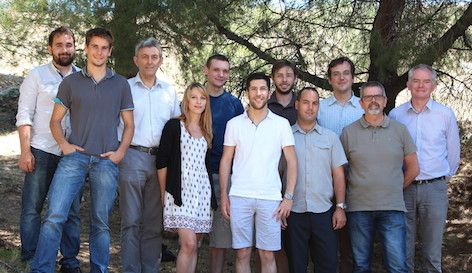
New sensorimotor capabilities for tomorrow's robotics
Thématiques
The Biorobotic Lab, headed by Dr. S. Viollet is a rare example of real transdisciplinary research department. For almost 30 years, this research group, composed of five permanent researchers, one electronic engineer, one micro-mechanic technician and 6 PhD students, has acquired strong skills in the study of the visual system of invertebrates (especially fly and bee) and their behavior and sensorimotor control feedback loops (such as optic flow regulation) which are hard-wired into their brains.
The team built a variety of analog and digital electronic circuits, including aVLSI prototypes, that realized visual motion sensor array and also built no-less than 8 wheeled and flying robots.
The results of this trans-disciplinary work are regularly published in major life sciences and robotic journals (such as PNAS, Current Biology ; PLoS One ; Bioinspiration & Biomimetics ; Naturwissenschaften ; J. Comp. Physiol. ; J Exp. Biology ; Autonomous Robots ; Robotics and Auton. Systems ; Sensors and Actuators ; IEEE Transaction on Robotics ; J. of Field Robotics), in major IEEE conferences in robotics (ICRA, IROS, ROBIO and SENSORS), and also received three IEEE conference awards. Furthermore, the team has patented several devices inspired by the fly with word-wide extension, concerning optic flow navigation, head body compensation and optic flow sensors. The Biorobotics Lab led recently two projects called RETINAE and IRIS funded by the French National Agency, two ither projet with the ESA and participated in two European projects (FP5 FET Open MARVEL, FP7 ICT/FET Open CURVACE).
The Biorobotics reserch group will provide a micro-mechanical workshop as well as a workshop in electronics and will mobilize two specialized technician in mechatronics. The technicians will be involved in the project to realize the different embedded electronic boards and mechanical parts that will be used for the tests and validation phases of the different prototypes. It will also make available a 3D printer for rapid prototyping of the support packages of the different mobile and aerial robots. In addition, the Biorobotics team will provide a flying machine arena equipped with 17 VICON cameras that monitor in real time the trajectory of the robots in volume of 6mx8mx6m.



